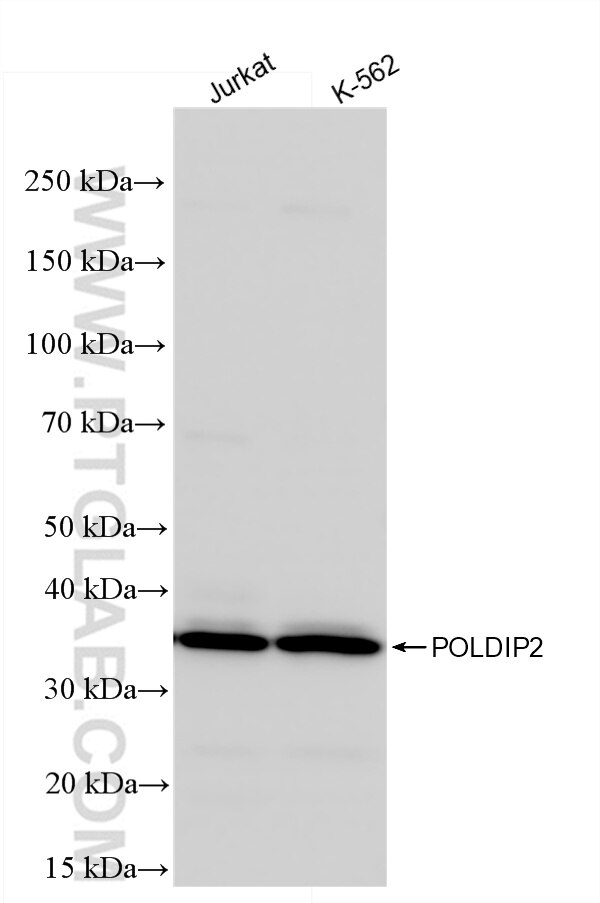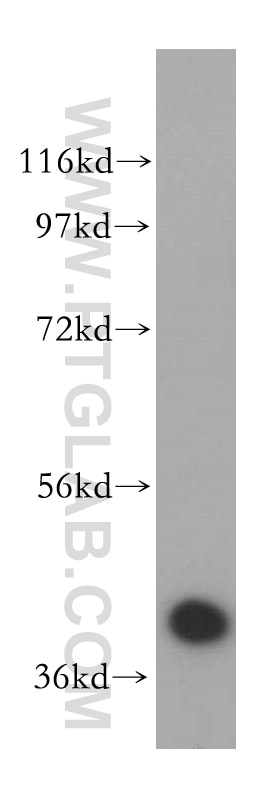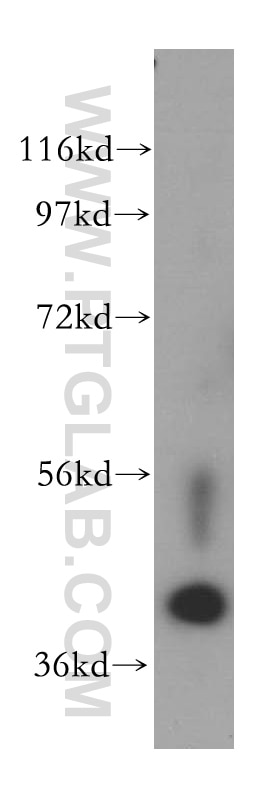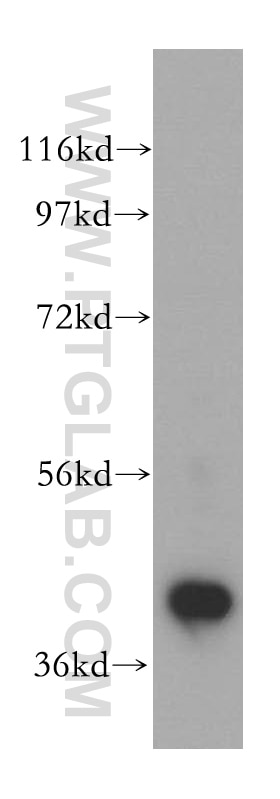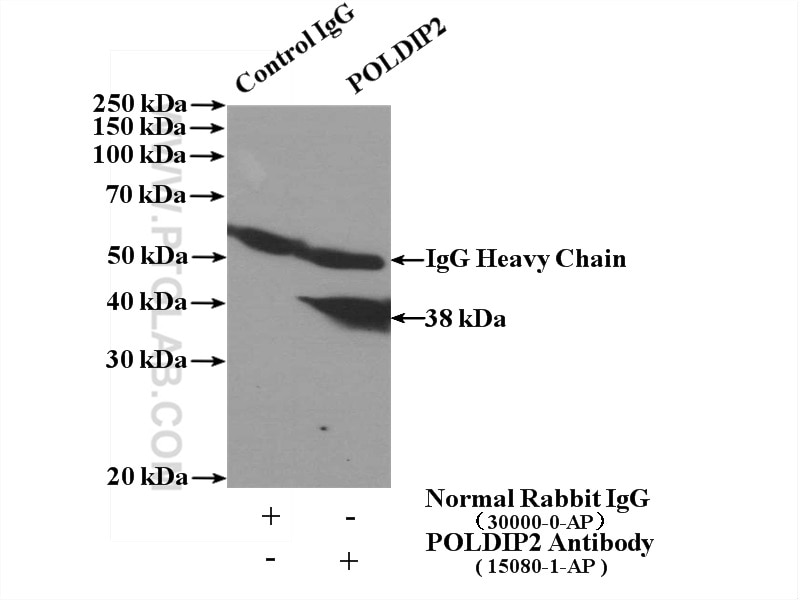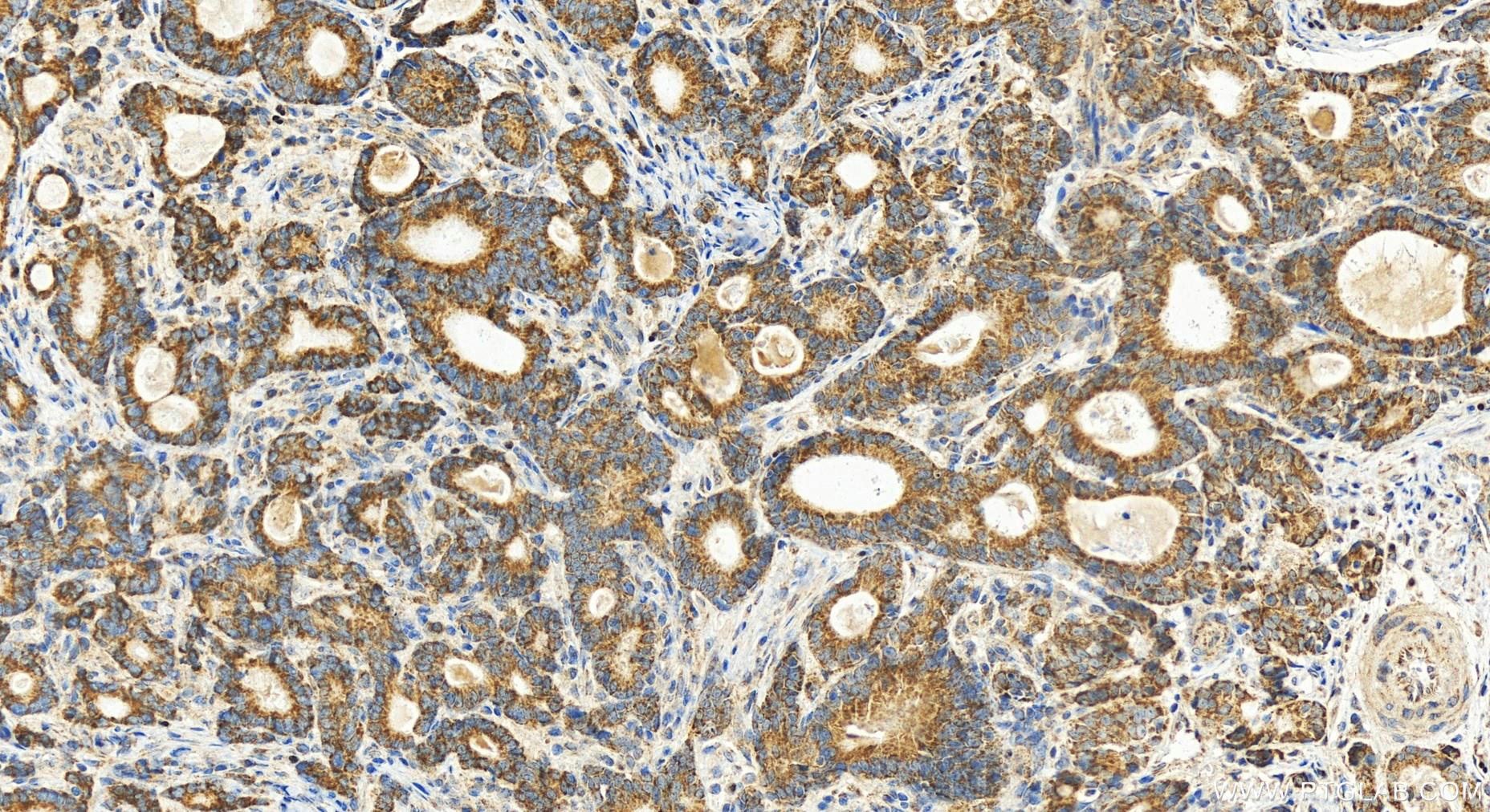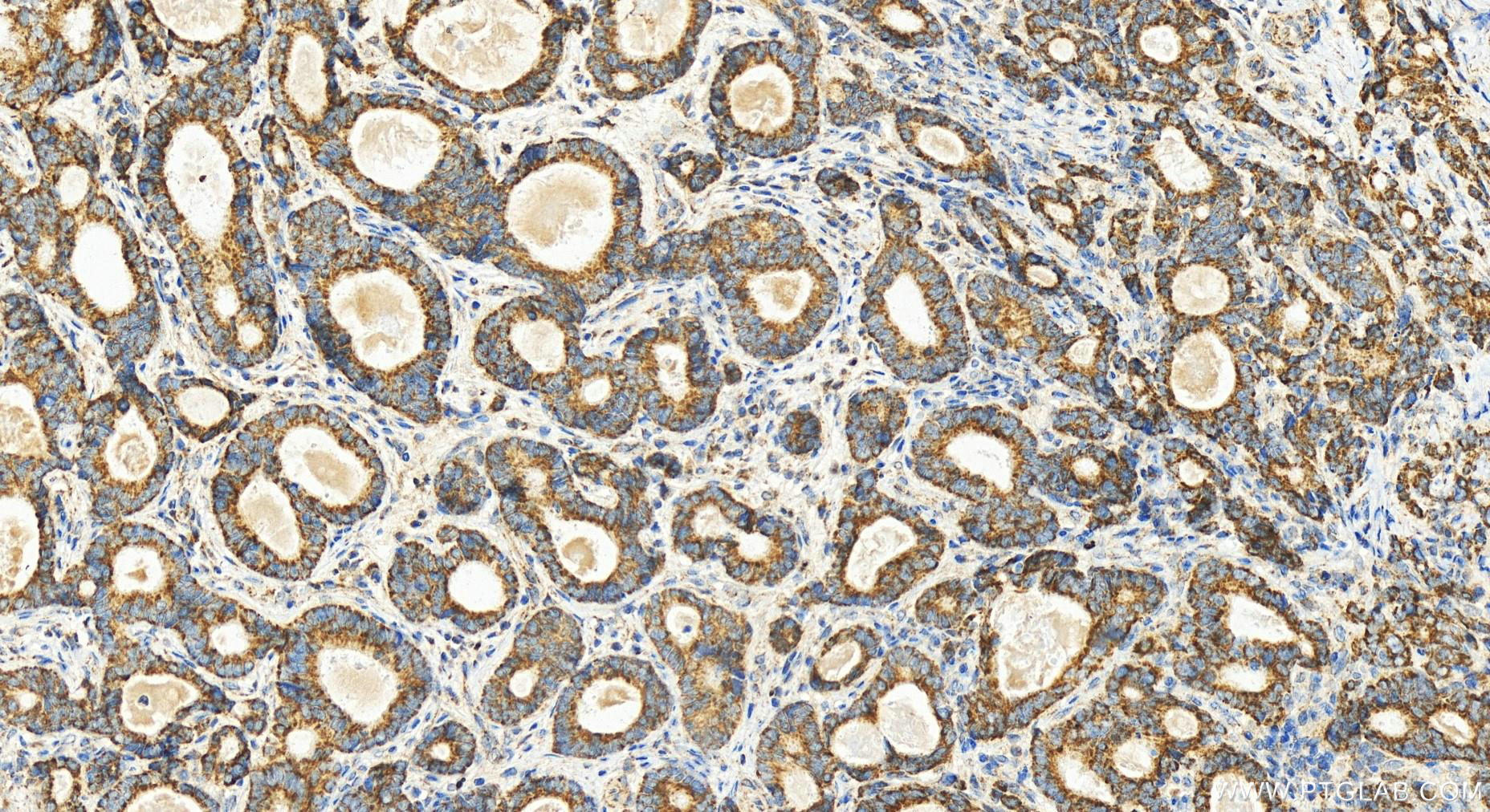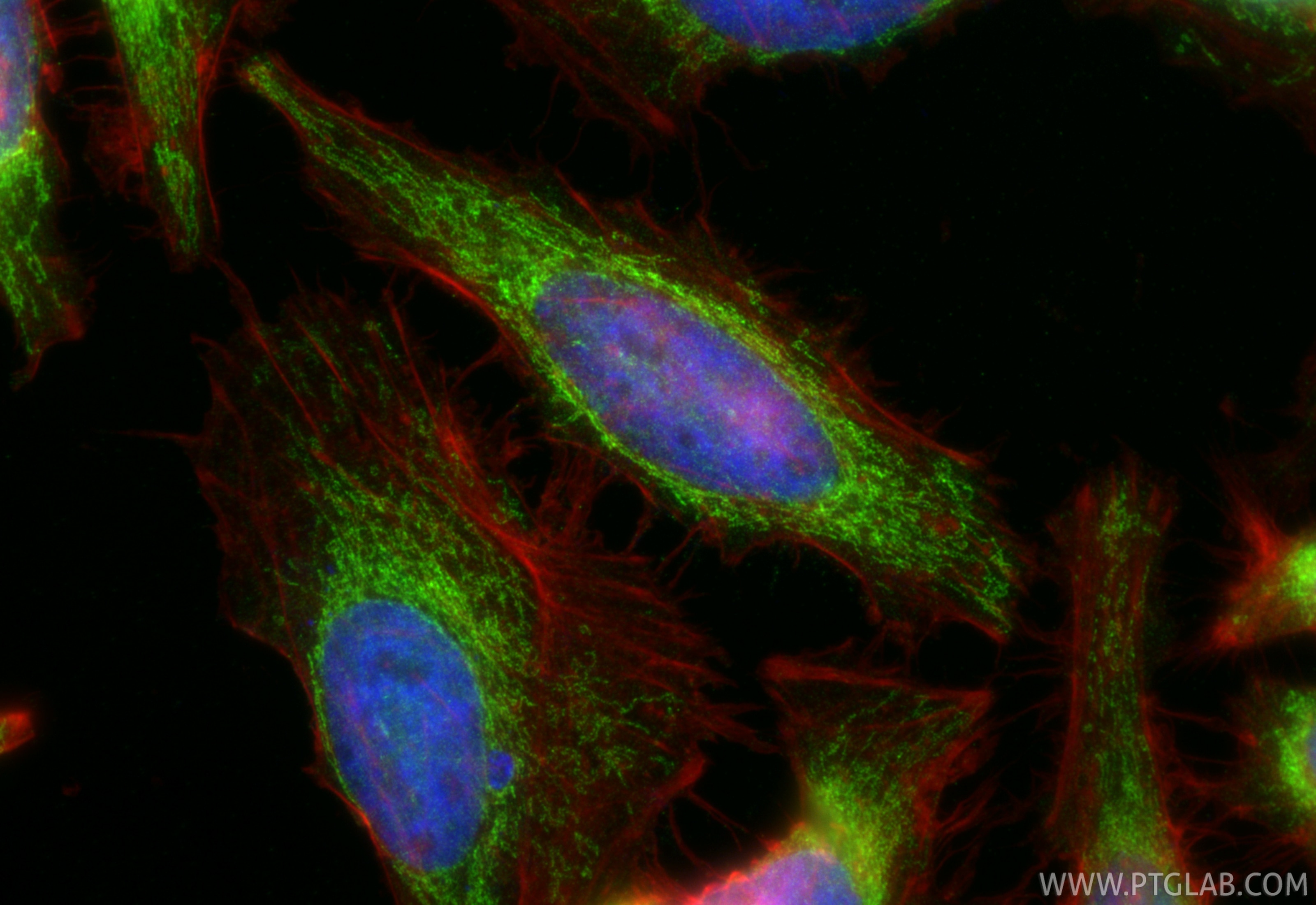Anticorps Polyclonal de lapin anti-POLDIP2
POLDIP2 Polyclonal Antibody for WB, IHC, IF/ICC, IP, ELISA
Hôte / Isotype
Lapin / IgG
Réactivité testée
Humain, rat, souris
Applications
WB, IHC, IF/ICC, IP, ELISA
Conjugaison
Non conjugué
N° de cat : 15080-1-AP
Synonymes
Galerie de données de validation
Applications testées
| Résultats positifs en WB | cellules Jurkat, cellules HeLa, cellules HepG2, cellules K-562 |
| Résultats positifs en IP | cellules HeLa |
| Résultats positifs en IHC | tissu de cancer de l'estomac humain, il est suggéré de démasquer l'antigène avec un tampon de TE buffer pH 9.0; (*) À défaut, 'le démasquage de l'antigène peut être 'effectué avec un tampon citrate pH 6,0. |
| Résultats positifs en IF/ICC | cellules HeLa, |
Dilution recommandée
| Application | Dilution |
|---|---|
| Western Blot (WB) | WB : 1:500-1:2000 |
| Immunoprécipitation (IP) | IP : 0.5-4.0 ug for 1.0-3.0 mg of total protein lysate |
| Immunohistochimie (IHC) | IHC : 1:50-1:500 |
| Immunofluorescence (IF)/ICC | IF/ICC : 1:50-1:500 |
| It is recommended that this reagent should be titrated in each testing system to obtain optimal results. | |
| Sample-dependent, check data in validation data gallery | |
Applications publiées
| WB | See 4 publications below |
| IF | See 1 publications below |
Informations sur le produit
15080-1-AP cible POLDIP2 dans les applications de WB, IHC, IF/ICC, IP, ELISA et montre une réactivité avec des échantillons Humain, rat, souris
| Réactivité | Humain, rat, souris |
| Réactivité citée | rat, Humain, souris |
| Hôte / Isotype | Lapin / IgG |
| Clonalité | Polyclonal |
| Type | Anticorps |
| Immunogène | POLDIP2 Protéine recombinante Ag7154 |
| Nom complet | polymerase (DNA-directed), delta interacting protein 2 |
| Masse moléculaire calculée | 42 kDa |
| Poids moléculaire observé | 38 kDa |
| Numéro d’acquisition GenBank | BC000655 |
| Symbole du gène | POLDIP2 |
| Identification du gène (NCBI) | 26073 |
| Conjugaison | Non conjugué |
| Forme | Liquide |
| Méthode de purification | Purification par affinité contre l'antigène |
| Tampon de stockage | PBS with 0.02% sodium azide and 50% glycerol |
| Conditions de stockage | Stocker à -20°C. Stable pendant un an après l'expédition. L'aliquotage n'est pas nécessaire pour le stockage à -20oC Les 20ul contiennent 0,1% de BSA. |
Informations générales
POLDIP2(Polymerase delta-interacting protein 2) is also named as PDIP38, POLD4. It is as a unique positive regulator of Nox4 via its association with p22phox and together with Nox4, has profound effects on Rhodependent cytoskeletal remodeling. It is also as a regulator of cell division. It consists of 368 amino acids and has a predicted molecular mass of 42 kDa, with a potential signal peptide cleavage site after the first N-terminal 48 residues, which would result in a protein of 37 kDa(PMID:19574552). Endogenous human and rat POLDIP2 localized to the nucleus, plasma membrane, and cytoplasm(PMID:17623671).
Protocole
| Product Specific Protocols | |
|---|---|
| WB protocol for POLDIP2 antibody 15080-1-AP | Download protocol |
| IHC protocol for POLDIP2 antibody 15080-1-AP | Download protocol |
| IF protocol for POLDIP2 antibody 15080-1-AP | Download protocol |
| IP protocol for POLDIP2 antibody 15080-1-AP | Download protocol |
| Standard Protocols | |
|---|---|
| Click here to view our Standard Protocols |
Publications
| Species | Application | Title |
|---|---|---|
EMBO J Poldip2 promotes mtDNA elimination during Drosophila spermatogenesis to ensure maternal inheritance | ||
Proc Natl Acad Sci U S A DNA polymerase δ-interacting protein 2 is a processivity factor for DNA polymerase λ during 8-oxo-7,8-dihydroguanine bypass. | ||
Cell Cycle PDIP38 is translocated to the spliceosomes/nuclear speckles in response to UV-induced DNA damage and is required for UV-induced alternative splicing of MDM2. | ||
Cells Inactivity of Peptidase ClpP Causes Primary Accumulation of Mitochondrial Disaggregase ClpX with Its Interacting Nucleoid Proteins, and of mtDNA. | ||
Life Sci Poldip2 Aggravates inflammation in diabetic retinopathy by impairing mitophagy via the AMPK/ULK1/Pink1 pathway |
